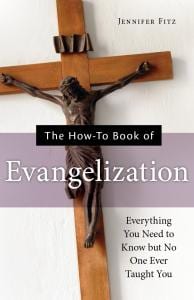UPDATE: Having seen a snippet of one of the more salient portions of the film, I can categorically recommend that you not view the film. (Assuming what I saw, an excerpt shared on Twitter by someone who should have known better than to post such a thing, was in fact taken from the film and not a deepfake. )
Whatever the artistic merits of the film may be overall, based on what I viewed the film violates the fundamental rule decency: If the only way you can film the shot is for the actors to do on camera (which means doing in front of the crew) what they ought not be doing in front any audience, ever, then you are not a director who cares about the well-being of your actors.
–> Find a different way to shoot the scene.
I will update again if I learn that the pertinent excerpt circulating is not from the film, but at first glance it appears genuine.
2nd Update: A little more research confirms that what I saw (excerpted on Twitter) is what multiple reviewers saw when watching the original film. The film also includes, per a warning at IMDB now taken down, a scene which meets, unequivocally, the definition of child pornography per US law. Not sure why Netflix isn’t being charged. No shortages of witnesses.
Interesting side note: My Twitter account is set to hide “sensitive content” which results in all kinds of innocent media being hidden from my view unless I choose to click through — most memorably the time Twitter felt that the view of a priest praying at Mass was, it seems, too risky for tender eyes. (Um. It was just some priest. At Mass. Doing normal priest things.) In contrast, I did not have to choose to click on the excerpt of the young girls dancing lasciviously, Twitter did not find that to be “sensitive content” at all. Hmmn.
***
The French film Mignonnes is (rightfully) causing a stir after Netflix ran a provocative publicity campaign and then failed to care very much that decent people don’t approve of sexualizing eleven-year-olds.
If you are looking for more information on the film, pull out Google Translate and get ready for a set of unsatisfying-but-enlightening answers:
Because none of the reviews include spoilers, I can’t give a final verdict (without having seen the film) on exactly where the director takes this. But here, I think, are the key pieces of info for readers of this blog:
#1 It is in no way a film for children. Don’t let the promotional materials fool you.
#2 Maïmouna Doucouré is telling her own story, and (more below on this) the story of many girls growing up in France (and the US — all over the world, I suspect) today. For her, the reality is one of coming from a strict, traditionalist, polygamous Muslim family where women were treated as sexual objects and forced into relationships that did not respect their dignity as human beings. So when Netflix sets up a lazy conflict between “religious family” and the hypersexualized dance world into which Amy, the young protagonist, is pulled, it is important for Catholics and other parents of good will to understand that Amy, like Ms. Doucouré, is not coming from a sane, healthy, dignifying religious background.
–> A major early plot point is that Amy’s mother is charged with organizing the wedding of her still-husband to his second wife, and Amy’s grandmother is aggressively insisting that Mom do her duty and shut up and put up, this is how things are. For the purposes of this film (not the purposes of its promoters or the wider non-immigrant culture receiving it), tween conflict over family-of-origin’s “religion” is not a case of garden-variety boredom with the parent’s conventional, anodyne religious practices as familiar to readers growing up in most of western society.
2nd Update: In this video interview, near the end when asked what she’s viewed lately that made the most impression on her, Ms. Doucouré says with obvious enthusiasm the Swedish television drama Kalifat. I think it’s a particularly good insight into her own worldview as a director — what she finds resonates with her in other productions out there right now.
#3 The problem of young girls being pressured into hypersexualized dance movement and attire is widespread. How widespread? Longtime readers may remember my answering this question. Let me emphasize the setting of that question: We are talking about upper middle class (you have to be affluent to afford dance team), religiously-affiliated suburban professional families in one of the most religiously-conservative cities of the Bible Belt, and the question was posed by a guy who knows the family through church. I cannot emphasize how many times I’ve been party to discussion among nice Catholic moms wondering what to do about the slutty dance routine problem. Parents rearing daughters in the most religiously conservative corners of the western world have to work hard to find a dance school for their daughters that doesn’t consider sexually suggestive clothing and dance moves to be a normal part of the repertoire.
#4 So, after reading what the director has to say about her film, here’s where she was trying to take it: She grew up in an immigrant household where religion was used as cover, among people her in native culture, to justify the objectifying, subjugation, and sexual exploitation of women. As a teen she was torn between that world and a permissive hedonism in teen culture that any reader coming of age after 1965 would recognize. And yet, as a grown woman attending a community event in her home neighborhood in Paris, she was absolutely shocked to see tween girls performing, with no one batting an eye, in a manner that you see in the trailer for the film.
–> The director’s statement of purpose for the film is that she wanted to show how girls growing up in her culture are pressured into choosing among two different kinds of sexually exploitive cultures.
(More below on that.)
#5 One thing Ms. Doucouré says in one of the interviews is that, in fact, she had to use quite a lot of restraint and under-tell just how sordid is the world that real middle school girls are living in today. In her words: Parents aren’t ready to see this. In my words: It would be illegal.
Is it morally problematic for Ms. Doucouré to be filming girls doing the dance moves, in the costumes, as she is? Absolutely. I do not approve. I do not say to you, “Go watch this film!” I do not say to you, “Subscribe to Netflix!” But understand that, from the director’s point of view, she is literally only having girls perform exactly what they are already doing in real life. She is having girls perform on film exactly what parents of competitive dancers in affluent, even nominally religious families, already pay buckets of money to have their girls do.
Her stated purpose in doing this (and I cannot confirm how well she pulls it off) is to show the harm that comes from this. Dance moms? Ms. Doucouré is after you.
#6 Let’s talk about that directorial restraint.
Ms. Doucouré’s research confirmed what I’ve known ever since I first sent an undercover agent into the world of affluent, mainstream suburban middle schoolers here in the Bible Belt: Girls these days expect to have to perform sexual favors for their peers.
Not just girls from poor immigrant families living in tough neighborhoods. We are talking girls at private schools, girls in club sports (read: thousands of dollars on her sports hobby), girls growing up in McMansions.
How normal is the promiscuity among tweens and teens? It is so widespread, and so self-sabotaging, that my kid’s class got abstinence talks from the atheist public-school biology teacher — a person with no moral reason to object to consensual sex, no reservations about contraception or abortion, but who could not help but see how teens were destroying themselves with the sheer quantity of premarital sex that had become the norm among the students.
If you are shocked by what you see in Cuties trailer, God bless you. Yes. Yes. It is two inches from child porn.
Why those two inches? Because it is a film about girls who are entering the now-normal world of actual child porn that is your teenager’s daily reality.
#7 Your middle schooler’s porn problem doesn’t come from nowhere.
I have no expectation that Mignonnes (Cuties) resolves in a manner that would win a Theology of the Body award. Mainstream, traditional French culture is not a culture of chastity. I love France. I love many things about French culture. But this is also a place where adultery is normal and accepted. What has changed in recent years, in terms of sexual morals as explored in this film, is not a change of kind but of degree. Traditional French culture at the highest, most respectable levels demanded discretion. Americans who disparage the French president’s having a mistress commit the fault of being uncouth. From the traditional French point of view, it would be like complaining the president uses the toilet — everyone does, but that doesn’t mean we have to chat about it.
Americans have our own, differently-flavored unchastity problems. (We, too, have adulterous presidents. For example.) Keep in mind that the parents and grandparents now approving of their daughter’s participation in Little Ho-House Dance Team grew up believing that Risky Business, Top Gun, and Officer and a Gentleman were all great films. Classics! I can remember watching what was supposed to be clean-cut classic Western — and one featuring boys and teens is co-stars in a youth-can-do-it themed film — and turning it off when we hit the Happy Prostitute trope. The US is the place where sweet old ladies at the antique mall try to convince your kids that porn is just fine.
So no, I don’t expect Mignonnes resolves a story about an eleven-year-old torn between two bad choices by finding the third way that is chastity. If nothing else, it’s an award-winning French film, and let me tell you, it is hard to find a French film that doesn’t glorify unchastity. It’s hard to find a French film that didn’t require someone to strip naked on the set in the making-of, and here I’m using the very, very low bar of “if it could have been filmed in a way that kept the naughty bits covered, it might can get a pass, but if there was simply no way to film this scene without the actor or actress actually being required to work nude in front of the camera, then we’re done, movie over.”
So. In conclusion:
- Per her own words, the director of Mignonnes (Cuties) was attempting to show that the sexualization of tweens is a serious problem;
- I agree;
- I have no reason to believe that the film resolves in favor of chastity, though I’m certainly open to being surprised, if anyone who’s already seen the film wants to cough up spoilers.

Here, have a palate cleanser, courtesy of Wikimedia’s Image of the Day (CC 4.0). Look here for a detailed description.





![On Killing: The Psychological Cost of Learning to Kill in War and Society by [Dave Grossman]](https://m.media-amazon.com/images/I/51xlYFvYCYL.jpg)




